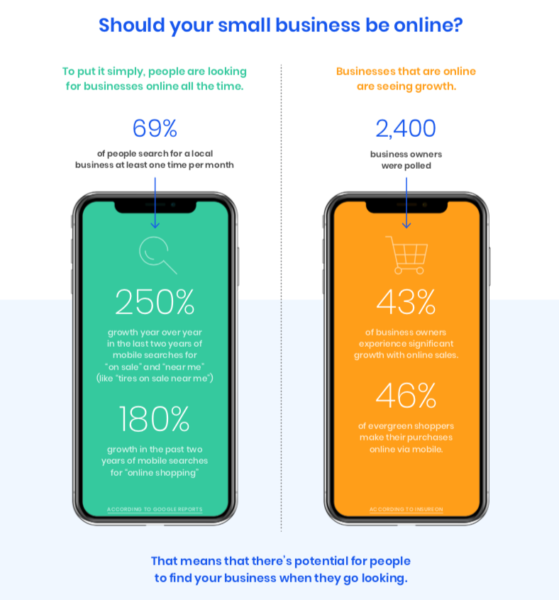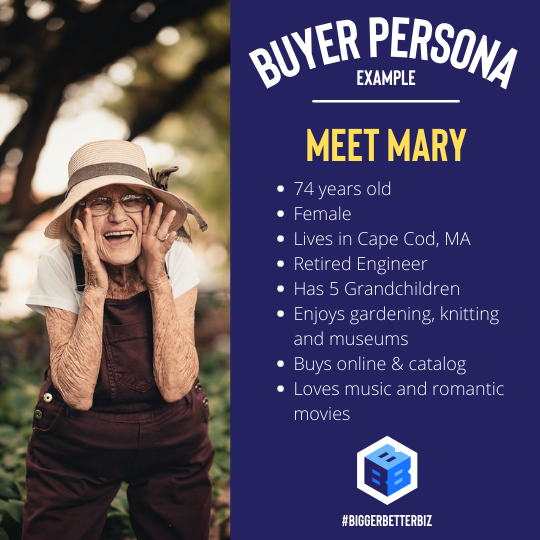
It used to be that retailers would only promote their business via print and electronic media ads in hopes of driving new customers through the door, but that traditional approach to retail marketing has transformed into digital-driven strategies that attract and keep loyal customers coming back again and again. As it was taught to me when starting BJC Digital Marketing, you’re not marketing for the first sale, but rather your sights should be set on driving customers in for the second and third sales.
Why? Because as a customer returns to your retail business for the second or third time, you increase the likelihood of them becoming a repeat, loyal customer, which translates into a larger lifetime value. The more repeat customers, the more value your retail marketing efforts yield.
What is retail marketing?
Retailing involves the sale of goods and services to customers. Historically, retail businesses operated out of brick-and-mortar stores to promote awareness of their brand. Several approaches to traditional retail marketing include running discounted product specials and advertising on billboards, local television channels, or newspapers.
For many retailers, these traditional retail marketing channels are comfortable because it is what they know, but there are also drawbacks to these approaches, such as the inability to track their effectiveness.
Instead, today’s retailers should turn their focus to online retail marketing because it has emerged as the most influential strategy for getting your retail business noticed in the community. Examples of online retail marketing in the new digital era include:
- building user-friendly business websites
- sending timely email marketing campaigns
- collecting and managing online reviews
- publishing videos on channels like YouTube
- getting active on social media networks and more
Why is retail marketing important?

It’s pivotal for your retail business to have an online presence.
Promoting your retail business is critically important to differentiate your products and/or services from what the competition has to offer.
Retail stores operating in crowded niches have to find ways to make their brand stand out by implementing a wide variety of marketing practices. From offering product samples to bundling services, retailers have to work hard to break through the noise and promote their businesses.
Simply put, in this day and age, online retail marketing is the way to go for increasing sales.
The Process of retail marketing
Marketing your retail business involves a time-tested process that predates the industrial revolution.
It’s called the four Ps of promoting your retail business.
It starts with a product
You can develop the most appealing storefront or build a great online store, but what makes consumers take action are the products you display inside the store. The superior quality of hard goods such as electronics and soft products like cosmetics represent the backbone of any retail marketing strategy.
Important to note that service providers can also offer products. For instance, if you own a spa, you may offer a “Wellness Bundle” including a 30-minute massage, hydro facial, and mani/pedi.
The price must be right
Setting the right price is a vital element of any online retail marketing program. You need to cover the costs of goods sold, with a little buffer added for a profit margin. Setting too high of a price can send potential customers to your competitors.
When I was a kid, I had a family member who started a gift basket business. They were extremely talented when it came to finding items and crafting beautiful baskets, but they failed to consider the costs of the items inside the basket as well as the time spent assembling each finished piece. As a result, their price was too low, and their business failed after only six months in business.
Location, location, location (aka place)
Where you set up shop goes a long way toward determining whether your retail business will be successful. Every retail marketing practice you use, which includes digitally promoting your business, will mean nothing if you establish your retail store at a location that prospects deem to be inconvenient or difficult to reach.
Since 2020, many brick-and-mortar retailers have adopted a hybrid approach, selling their products in-person and online through an ecommerce website. This is a great way for your retail business to be in several places at once, accessible to anyone and everyone who is interested in buying your products or services.
Promoting your retail business
As the last P in the mix, promotion combines the benefits of traditional retail marketing with online retail marketing. How much of each strategy you use depends on the type of business that you operate. If you run a business that sells a wide variety of products, then a digital approach to marketing by running an ecommerce store might be a viable promotional option.
Bonus P: Understand the people buying from you
Your product, price, place, and promotion can be top-notch, but if you don’t understand the people — also known as your customers — then you may have a disconnect.
Whenever we take on a new marketing client, we walk them through building a buyer persona, which is an exercise in defining their ideal customer. Buyer personas have many names: marketing persona, customer avatar, and dream customer profile, but they all come down to the core principle of understanding what makes your customers want your products and services.
A well-developed buyer persona is your best friend when it comes to developing and implementing your retail marketing plan, so definitely take the time to craft one.

Online marketing: promoting your store on a budget
People are talking up their favorite businesses directly on social media platforms like Facebook and Instagram; they are consuming and sharing content they find useful or entertaining from those businesses, and they are asking connections for online reviews and recommendations.
Your business has an opportunity to be part of more of these conversations. The more you can do to keep your business top of mind and make it easy for others to talk about you, the more you increase the chances of people recommending or seeking you out when they need what you offer.
Beyond being part of the conversation, you must understand what people may find when they go looking for your business, specifically by name, or a product that your business offers. And, of course, be aware that if they don’t find your business when they go looking online, it begs the question, “Does your business even exist?”
Here are four highly effective online marketing strategies that can increase recognition for your retail business:
- Your retail website
- Non-paid (organic) searches
- Local Search Engine Optimization (SEO)
- Online customer reviews
Let’s take a look at how to set your business up for success.
Your retail business website
One of the biggest changes for retail store owners during the transition to the digital era involves changing the way they should look at their storefronts. Yes, you still need to promote your products by using traditional retail marketing techniques, such as hanging signs and providing in-store product samples. However, the digital era means your physical storefront is now accompanied by a virtual storefront called your business website.
At the beginning of 2019, nearly two-thirds of all small businesses had some form of a website. Of the small businesses that created virtual storefronts for their businesses, more than 90% of them had a mobile-friendly website.
Whether you sell paint for independent contractors or offer a wide variety of spices for culinarians, developing a website for your business will attract more potential customers.
Your business website does not need to be fancy. Just present the following information, and you will be on your way to connecting with new customers.
- Your story (About us)
- Contact information
- Hours of operation
- Online product ordering
- List of products
- Short product descriptions
- Customer testimonials
- Google map of the location
Remember to include a call to action (CTA) on every product page. The calls to action should be written to highlight one or more benefits a product has to offer.
Make your website SEO-friendly
Perhaps no other digital marketing technique has more relevance than search engine optimization (SEO).
You cannot build a website and then just wait for customers to visit your virtual storefront. You need to develop a retail marketing plan that helps your website to rank highly in each of the three major search engines — Google, Bing, and Yahoo! — to increase website traffic.
How do you make your business website SEO-friendly? Here are a few proven SEO techniques:
- Positive customer reviews
- Links to well-respected websites
- Links from well-respected websites to your business website
- Videos that describe the benefits of using your products
- Meta titles and descriptions that provide helpful information about your business
- Useful content
The last SEO tip is so important it has its own name: content marketing.
“Content is king” is not just another trendy online marketing phrase. Google rewards websites that present helpful content, which is something you want to do anyways to earn the trust of prospective customers. When potential customers perceive you as an expert in your operating niche, they will be much more likely to engage with you via your business website. The only way to do this is to offer good online content.
Think local
The most effective online retail marketing tactics focus on your local market. If you operate an art gallery in Denver, you want to focus your retail marketing efforts on local customers living in the Mile High City, as well as in nearby communities like Aurora, Boulder, and Littleton.
At one time, the Yellow Pages represented one of the most effective retail marketing tools for small businesses. You placed an ad in the Yellow Pages, and then you waited for customers to “let their fingers do the walking.” Now, Google Business Profiles is the digital version of the Yellow Pages.
You claim and confirm a listing for your business, and then you present accurate contact information that includes the name of your business, telephone number, and the physical address of your storefront.
Your Business Profile on Google offers you the opportunity to describe your business, as well as mention a few of your most popular products. Referring to local landmarks and popular community events is yet another feather in your Google Business Profile cap.
Digital word-of-mouth advertising and reviews
Another tried and true retail marketing tactic is leveraging word-of-mouth advertising to drive business sales. A friend, family member, or professional peer enthusiastically recommends a product, and you immediately initiate the buying process.
In the digital era, customer reviews on sites such as Yelp and Google have taken word-of-mouth advertising to the next retail marketing level.
In fact, nearly 95 percent of shoppers read online reviews before making a purchase. Eighty-eight percent of consumers trust online reviews as much as they trust the recommendations made by people they know. All you have to do is encourage your customers to leave your business an online review, whether that entails a subtle suggestion or offering an incentive like a product discount on a future purchase.
The bottom line
Developing an effective online retail marketing strategy can be confusing at best and intimidating at worst. In addition, most business owners do not have the time and patience to learn about digital marketing options.
Follow the steps above to ensure you have a solid retail marketing foundation, so you can continue to drive customers in for the third sale and beyond.




